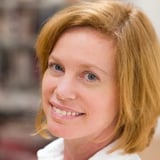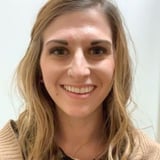Summary
This is a case study of a strategic, enterprise-level IT project that was stalled due to organizational and cultural issues within company. By applying a few familiar research techniques and frameworks (and one unfamiliar modeling framework) towards understanding and solving organizational problems, the project team found its footing and was able to deliver a complex application that will position the company for success.
Key Insights
-
•
Project delays often arise from deep organizational and cultural issues rather than team incompetence.
-
•
Engaging stakeholders as co-creators in research recommendations boosts buy-in and eases persuasion.
-
•
Distinguishing immediate domain (project and industry) from extended domain (monitoring and success definitions) is critical to managing project scope.
-
•
Edgar Schein’s three levels of culture—artifacts, espoused beliefs, and unconscious assumptions—help reveal hidden organizational dynamics.
-
•
Cross-functional projects often fail due to siloed reporting and unconscious allegiance to functional areas over project teams.
-
•
Taking meeting minutes with named action items assigned to leaders reduced conflict and clarified accountability.
-
•
Pairing technical developers with subject matter experts enables translating complex domain knowledge into actionable design artifacts.
-
•
Soft systems methodology allows modeling of ‘soft’ organizational influences on project success, including norms and values.
-
•
Engagement challenges manifest at multiple levels: sponsors, project teams, and external stakeholders require targeted approaches.
-
•
Grassroots technical collaboration and integration efforts can succeed even when formal management engagement is lacking.
Notable Quotes
"When projects are late or delayed it’s often due to organizational and cultural issues rather than conduct of the project team."
"I like to engage my stakeholders as co-creators and co-discoverers so their ideas and concerns get reflected in recommendations."
"People on the project were reporting back to management in their silo, not talking to one another."
"I found the problem solver in the UI developer and identified the project’s sponsor who really felt the pain."
"Managers were asking for user stories but hadn’t done any analysis or design — they didn’t understand the scope."
"The difference between the way people talk about how things are done and how they are actually done reveals unconscious assumptions."
"Decision making here is basically forge trading — people argue and withhold support until they get what they want."
"Our technical leads started attending other teams’ meetings, helping break down integration barriers."
"At the turning point, the team realized they were in charge of their own process and got engaged."
"The biggest problem was to solve the engagement problem first with the sponsor, then the team, then external stakeholders."
Or choose a question:
















More Videos

"Decision culture is a better lens than data culture for thinking about what decisions we're trying to facilitate with AI."
Brian T. O’Neill Maria Cipollone Luis Colin Manuel Dahm Mike OrenDoes Designing and Researching Data Products Powered by ML/AI and Analytics Call for New UX Methods?
February 18, 2022

"I used GPT-4 to retag 1,200 blog posts, reducing an estimated 10–12 hours of tedious manual work to about a third of that time."
Jorge ArangoScale Smart: AI-Powered Content Organization Strategies
September 24, 2024

"If you want to take advantage of asking speakers questions and having discussions, join our Slack."
Bria AlexanderOpening Remarks
October 1, 2021

"Manuel Herrera, our sketch noter, has contributed wonderfully to visually capturing the spirit and content of the conference."
Louis Rosenfeld Bria AlexanderDay 1 Welcome
September 23, 2024

"Start every project by asking What about women?"
Mansi GuptaWomen-Centric Research: What, Why, How
March 29, 2023

"You can also reach us quickly by going to help-desk-customer-service for any tech or support issues."
Bria AlexanderOpening Remarks
October 3, 2023

"If you are comfortable with it, put your cameras on. It makes me not feel like we’re talking to an answering machine."
Andy Polaine Lavrans LøvlieWhat is the role of service design in product-led organizations?
December 3, 2024

"The CSS is only what’s relevant for recreating the layer; components know how to handle theming and styling internally."
George Abraham Stefan IvanovDesign Systems To-Go: Indigo.Design Overview and Exploring the Developer Workflow (Part 3)
October 1, 2021

"Good research does not speak for itself; it requires a whole communication plan and explicit role as a catalyst for change."
Robin BeersBeyond Insights: Researchers as Organizational Change Catalysts
March 25, 2024
















